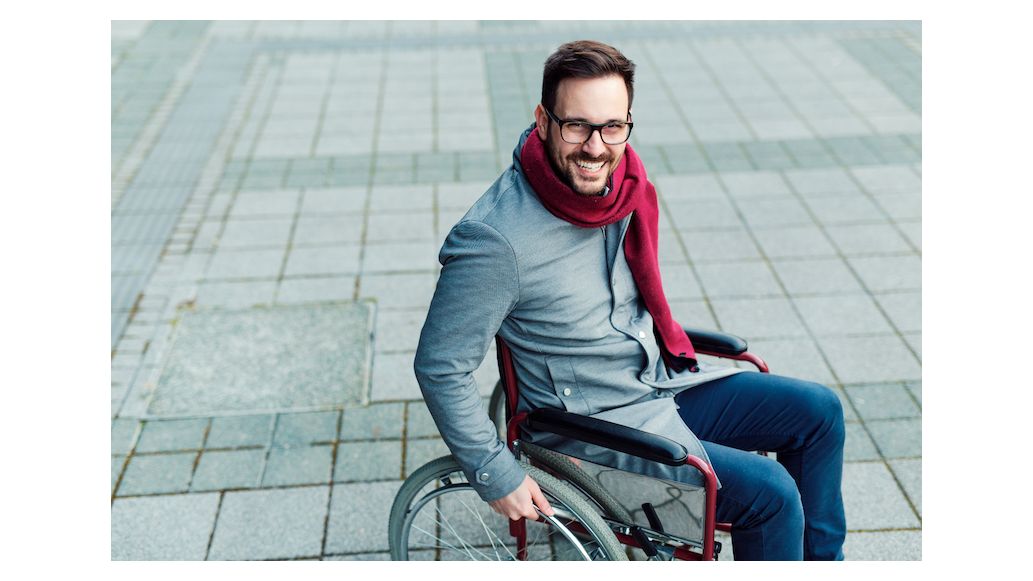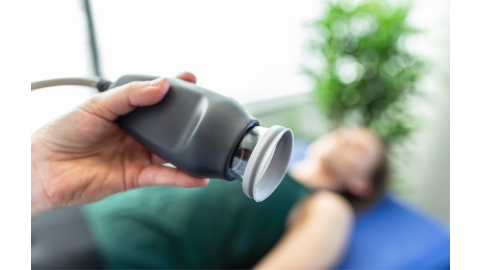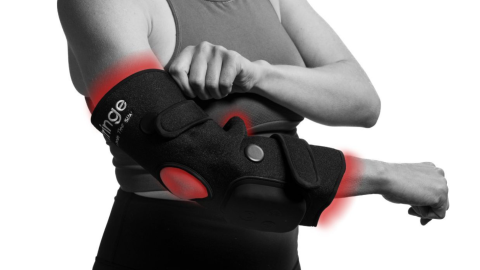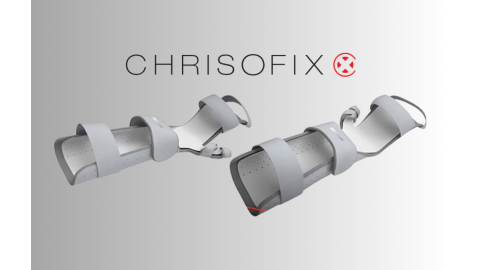The right belt or cushion can help correct common positioning problems like leaning to one side or sliding out of the wheelchair. They can also help with pelvic tilting that makes you lean forward or backward in the chair. This means less pain and better stability for you or your loved ones.
Neutral Positioning
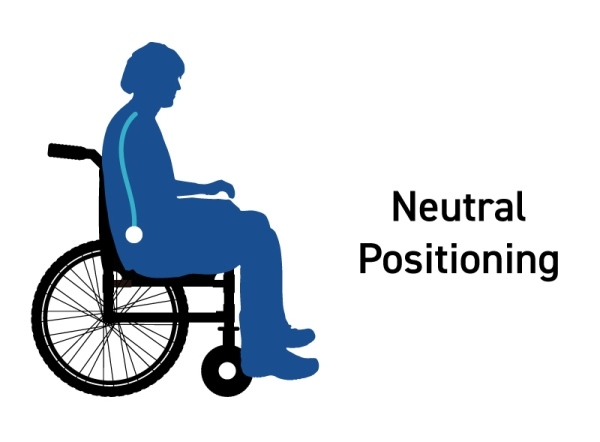
Let’s start with how you should be positioned in a wheelchair. Your pelvis (hip bones) should be level and your spine straight. Your legs should be parallel both to each other and to your seat. Finally, your feet should be well supported.
Problems with Poor Posture
Why does your posture matter? Because improper positioning can lead to several other problems, including:
- Difficulty breathing
- Problems with swallowing and risk of aspiration (breathing foreign objects like food or water so it goes “down the wrong pipe”)
- Poor digestion
- Urinary tract issues
- Lessened ability to use arms for self-propulsion in wheelchair and other tasks (because arms are needed for balance)
- Risk of tipping the wheelchair
- Impedes socialization with others
Posterior Pelvic Tilt
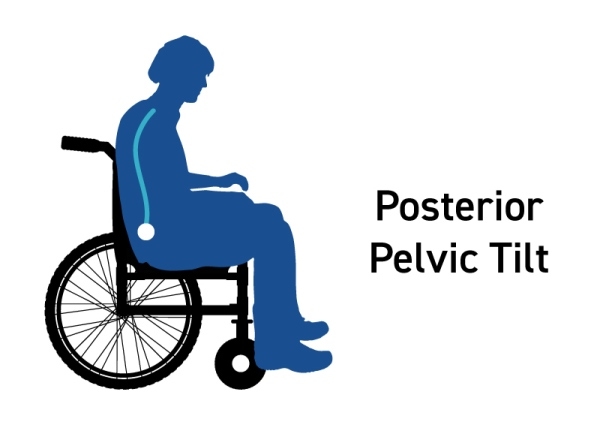
What is it?
Posterior pelvic tilt occurs when the pelvis is tipped backward and the torso is tipped forward (in a slumped position) so the head looks at the floor.
Problem
The c shape restricts breathing and voice projection. Abdominal pressure can lead to constipation, reflux, and increased risk of UTIs and other bladder problems. Plus, the downward head position can make you more susceptible to choking and aspiration. It also can interfere with socialization as you can’t look upward for activities or when conversing with others.
Solution
If the pelvic tilt is correctable/flexible, there are products that can help adjust your position. One easy solution is a ½ lumbar roll. Attach it behind your pelvis to keep you in the proper position while seated. A wheelchair belt can also help with maintaining good posture.
Anterior Pelvic Tilt
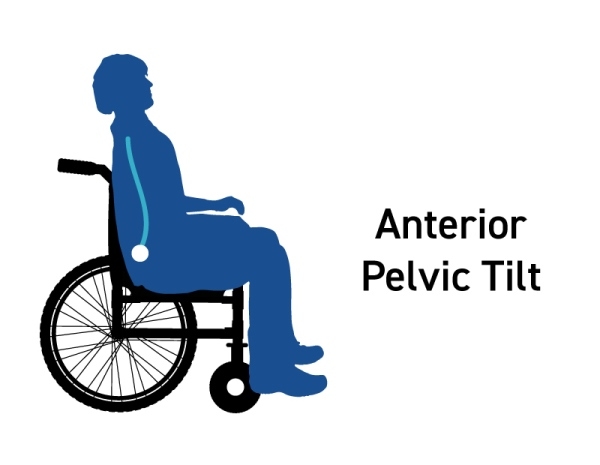
What is it?
An anterior pelvic tilt means your pelvis is tipped forward toward your knees. Your back is often arched and your gaze looks at the ceiling.
Problem
The excessive spinal curve creates problems for your digestion and bladder leading to constipation and UTIs. The hyperextended neck can create difficulty when swallowing and increase the risk of aspiration. Also, the upward eye gaze can make it hard to engage with others and enjoy communicating.
Solution
A correctable tilt can be improved by using positioning aids. An anti-thrust cushion is lower on the back half which helps tilt your pelvis backwards into a neutral position. Use a two piece belt for extra support.
Pelvic Obliquity
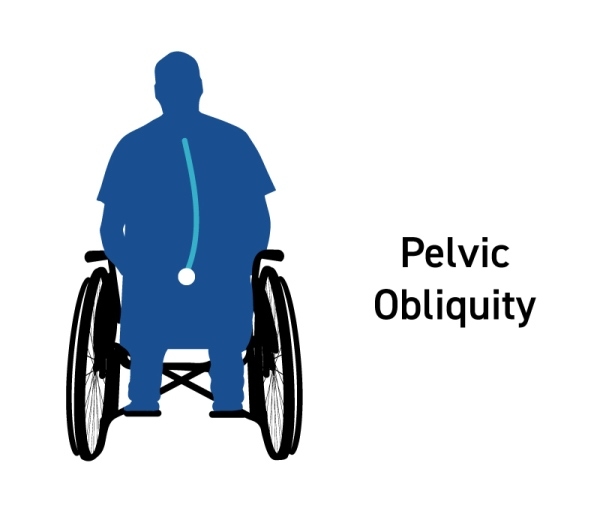
What is it?
One half of the pelvis is higher than the other instead of being even.
Problem
You may lean to one side or appear to be sitting crooked. Your spine is curved due to the positioning which could cause pain. One side is receiving more pressure when seated which can also create pain.
Solution
The right solution depends on whether your obliquity is correctable or fixed. A correctable obliquity allows the pelvis to be repositioned properly. If the obliquity is in the early stages, an adjustable quadrant cushion can help. Another option during the correctable phase is a hip belt. Secure it at a 90 degree angle to counteract the obliquity. If you’re looking for one simple solution, a no lean cushion can be used with both correctable and fixed conditions. Place the built-up side under the lower half of your pelvis if it’s correctable. This will help keep your pelvis equal and balanced. If you have fixed obliquity, place the built-up side under the higher half. This will reduce pressure and give you more stability than a flat cushion.
Pelvic Migration
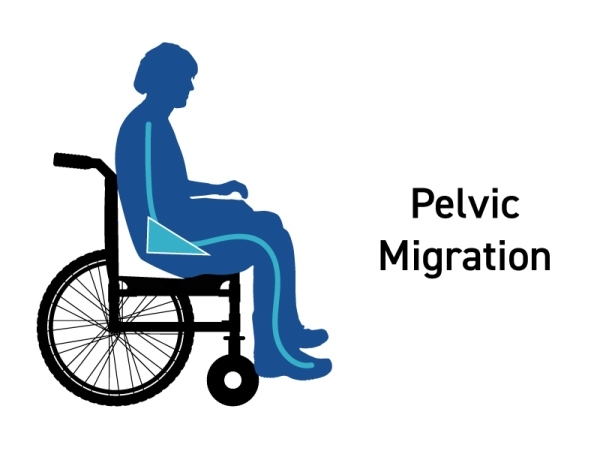
What is it?
A term used when the pelvis creeps forward while sitting.
Problem
This could lead to you slipping out of the wheelchair and falling. The forward sliding is often due to weakness or self-propulsion.
Solution
To prevent sliding forward in the wheelchair, an anti-thrust cushion can be helpful. The back two-thirds are lower while the front one-third is higher making it easier to stay in your seat. Another alternative is a pommel cushion. The pommel is a built-up area in the front, center area that provides slide control.
Sitting in a wheelchair with proper posture can be difficult. However, most positioning problems can be solved by adding a belt or trying a new cushion.
Look at all of our cushions to find the best match for your needs!
Medical Disclaimer: The information provided on this site, including text, graphics, images and other material, are for informational purposes only and are not intended to substitute for professional medical advice, diagnosis or treatment. Always seek the advice of your physician or other healthcare professional with any questions or concerns you may have regarding your condition.








 France
France Australia
Australia